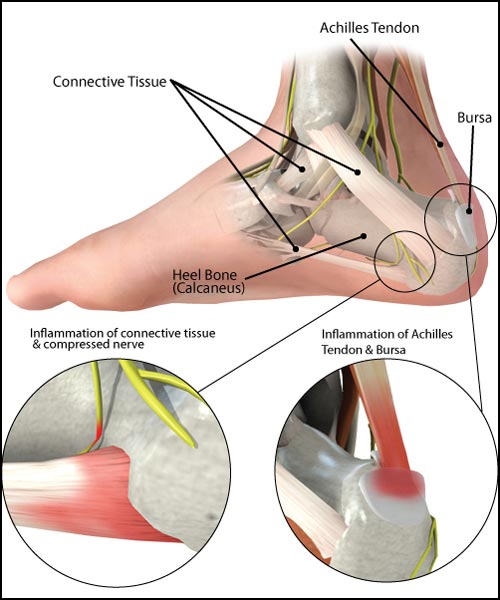Plantar Fasciitis
Plantar fasciitis is a painful foot condition. It occurs when connective tissue at the bottom of the foot, called the plantar fascia, is irritated and inflamed. The condition commonly occurs among people who spend a lot of time on their feet. Heel pain that occurs in the morning upon wakening is a hallmark sign of plantar fasciitis. Fortunately, for the majority of people, symptoms are relieved without surgery.
ANATOMY
The plantar fascia is a thick connective tissue located on the bottom of the foot. It extends from the heel to the ball of the foot. The plantar fascia maintains the arch of the foot.
CAUSES
Plantar fasciitis is caused by structural problems in the foot. People with flat feet have an extra long plantar fascia, and people with high arches have a short plantar fascia, which makes them prone to plantar fasciitis. Sudden weight gain, obesity, and prolonged standing or walking on hard surfaces contributes to the condition.
SYMPTOMS
Plantar fasciitis can cause significant heel pain. The pain is usually worse in the morning upon awakening, following rest, or after being on your feet for long periods of time. The pain may subside after walking or stretching, which helps relax the plantar fascia.
Many people with plantar fasciitis develop heel spurs. Heel spurs are abnormal bony growths that form under the heel. They occur as a result of ongoing plantar fascia inflammation or if the plantar fascia pulls away from the bone.
DIAGNOSIS
Your doctor will review your medical history and examine your foot. You should tell your doctor about your symptoms and the amount of time that you spend on your feet. X-rays, bone scans, or magnetic resonance imaging (MRI) scans may be used to give more information about your foot structure and identify the location and size of a heel spur.
TREATMENT
In the majority of cases, plantar fasciitis is treated non-surgically. Rest, ice, and over-the-counter anti-inflammatory or prescription medications can help ease symptoms. Cortisone injections may also be used. It can be helpful to lose weight and not go barefoot.
You may be referred to a physical therapist to learn exercises to stretch and help relax the tissues in the heel. Your doctor may recommend custom orthotics, shoe inserts, or a removable walking cast to help position your foot and cushion your heel. Night splints can help while you sleep.
SURGERY
Surgery is necessary a very small percentage of the time. It may be considered after non-surgical treatments have failed. Plantar fascia release surgery is used to relax the plantar fascia. This surgery is commonly paired with tarsal tunnel release surgery. Surgery is successful for the majority of people.
RECOVERY
The majority of people with plantar fasciitis improve after a few months of non-surgical treatment. It is important to follow your doctor’s instructions. Let your doctor know if your symptoms do not improve after a few months so that your treatment plan can be reassessed.
PREVENTION
Customized orthotics and insoles can help relieve foot pressure. It is important to perform your exercises to help keep your foot stretched and relaxed. Maintaining a healthy weight can help as well.

